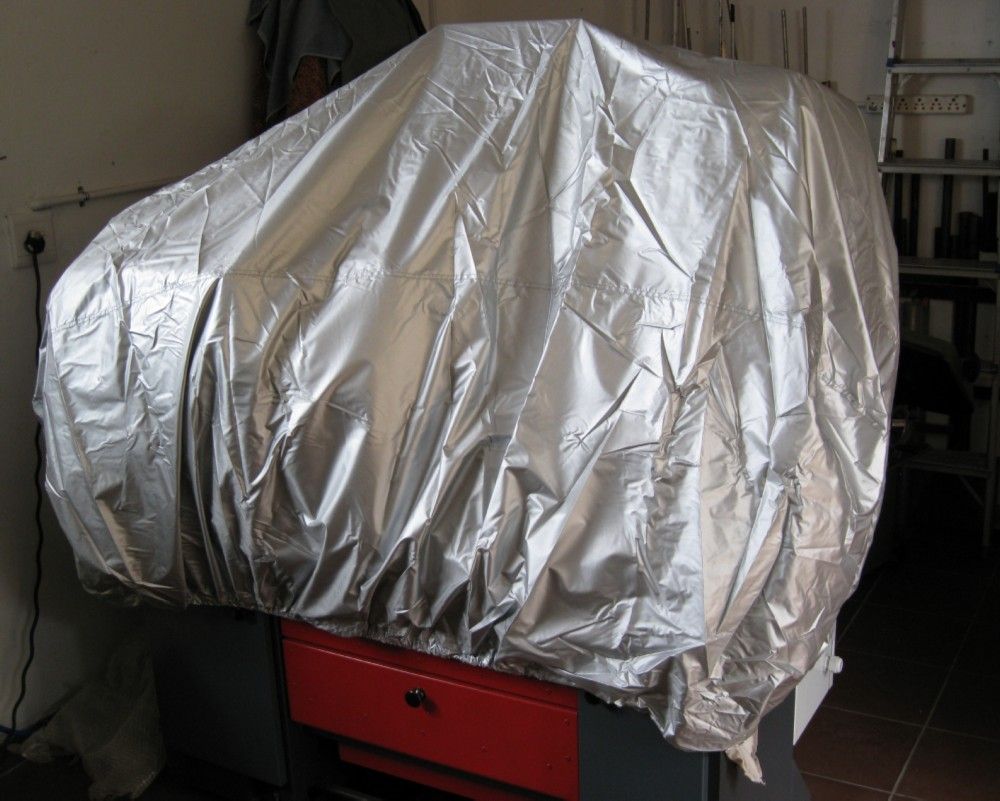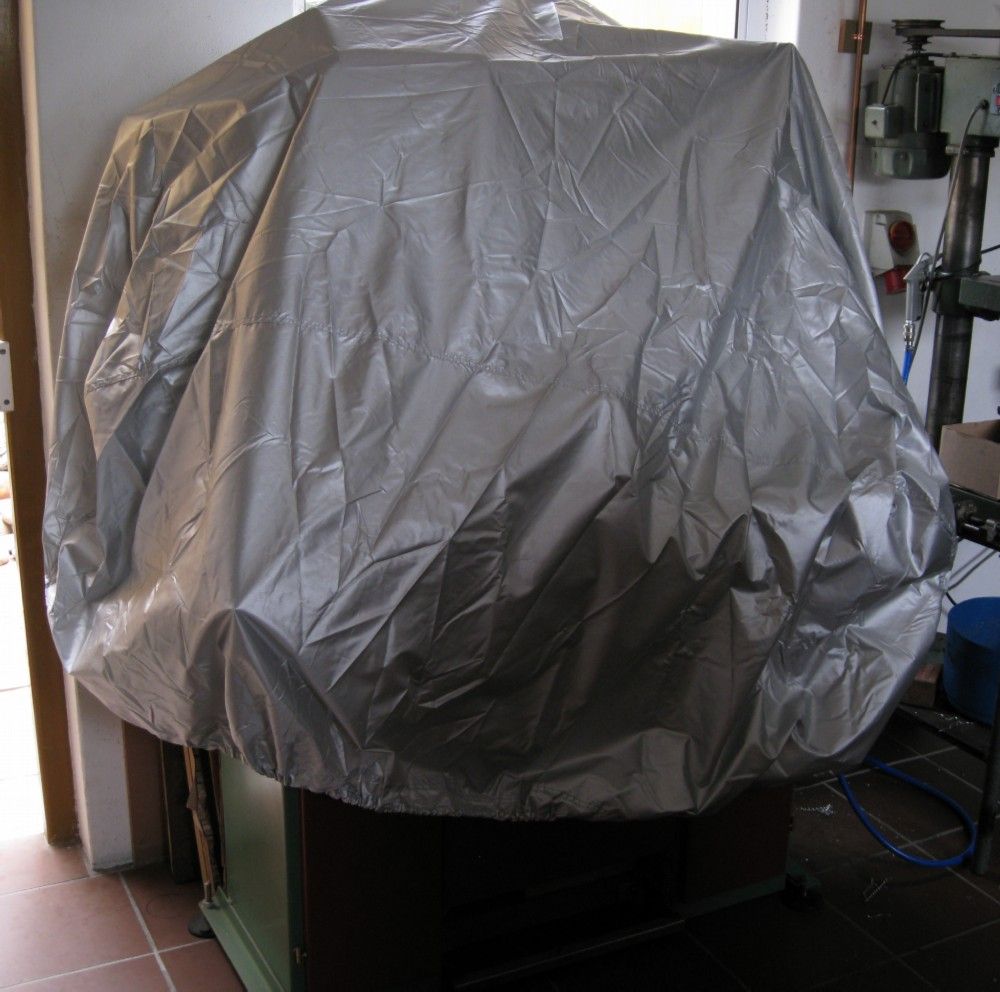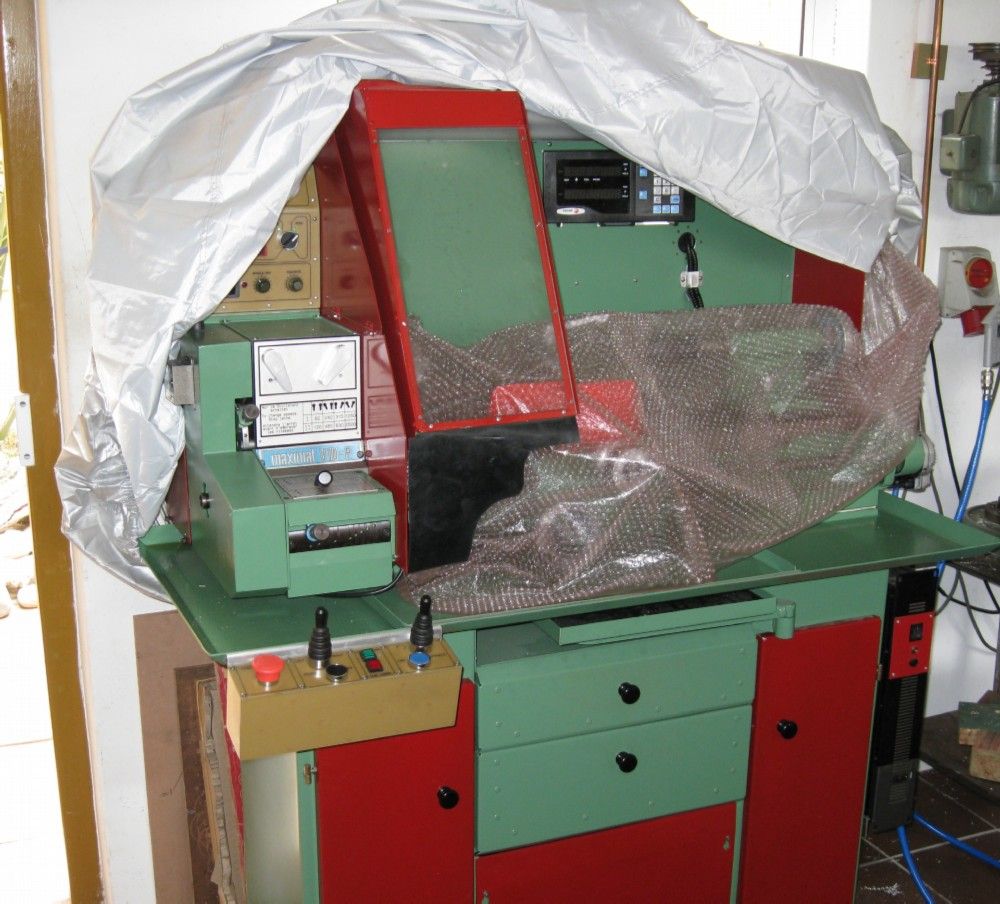Posted by SillyOldDuffer on 06/01/2019 16:06:25:
Plastic vs Cotton depends on what your problem is. Both inhibit air-flow around the machine and keep damp air away, or at least stop it circulating. Both are potentially helpful with various pros and cons. Cotton is a better insulator, which tends to help the machine underneath at a steady temperature. A plastic cover can trap wet air in contact with the machine, or collect condensation on the inside and drip water on to the machine. Cotton being porous and a good thermal insulator won't collect condensation, but it will soak it up.
One way of choosing is to decide if your damp problem is more like a shed roof or feet. A shed subject to rain and mist needs an impermeable barrier to keep wet out. Plastic socks would be very bad for your feet. They trap sweat, you smell bad and get foot rot.
In my generally dry UK workshop, in a well-insulated part of the house, cotton is better because it doesn't trap condensation. At the Nambian seaside Joe has a very different problem; for him plastic is best. I suspect for a lot of people either would do, or even not bothering.
When dealing with condensation I feel it's best to eliminate root causes if you can – stop water getting in or remove it with ventilation or a dehumidifier and inhibit the temperature swings that encourage condensation on cold metal surfaces. (A blanket might be better than cotton sheet.)
Dave
Dave, your post set me thinking a bit more on the issues I had with rust here in Namibia. I have two shops, one only metal working and one that is mostly woodwork. In the latter is a large bandsaw and tablesaw ( table abt 1.5mx1m). As wood and oiled metal surfaces don't really mix, I started by not oiling these machines. I covered first with an old duvet cover, cotton, then a plastic cover to still keep the sand/silica/mica dust from the tables. After a week or two, I found my hand covered in a red/brown fine powder after wiping the tables with the hand. I cleaned off the fine rust, which covered the entire metal surface, and then swapped the plastic and and duvet, ie, plastic first, and the rust would still appear, but in patches and only after 4 to 6 weeks. The patches were noted to be where the plastic did not contact the table fully.
I think the cloth cover contained enough 'water' absorbed from the humid air, and trapping that between the metals surface and plastic sheet was bad. Likewise, trapping pockets of humid air between the plastic sheet and the metal surface was as bad.
So now I wipe down the woodwork machines with a 50:50 mix of turps and two stroke oil, and cover with plastic, and a quick clean before doing wood seems OK.
So, as you say, there is no 'better' solution – keep falling condensation from the machines, keep the machines above the dewpoint temp (Clog's idea of a very low wattage lamp under the was, with a car cover might work well), and keep them oiled. When I still lived in South Africa ( Johannesburg) humidity was low, temps inside the shop were never below 10-12deg in winter, and the building was brick and steel roofing with an insulated ceiling and the machines stood open with no problems, so each situation needs to be resolved on it merits..
Joe
ega.







